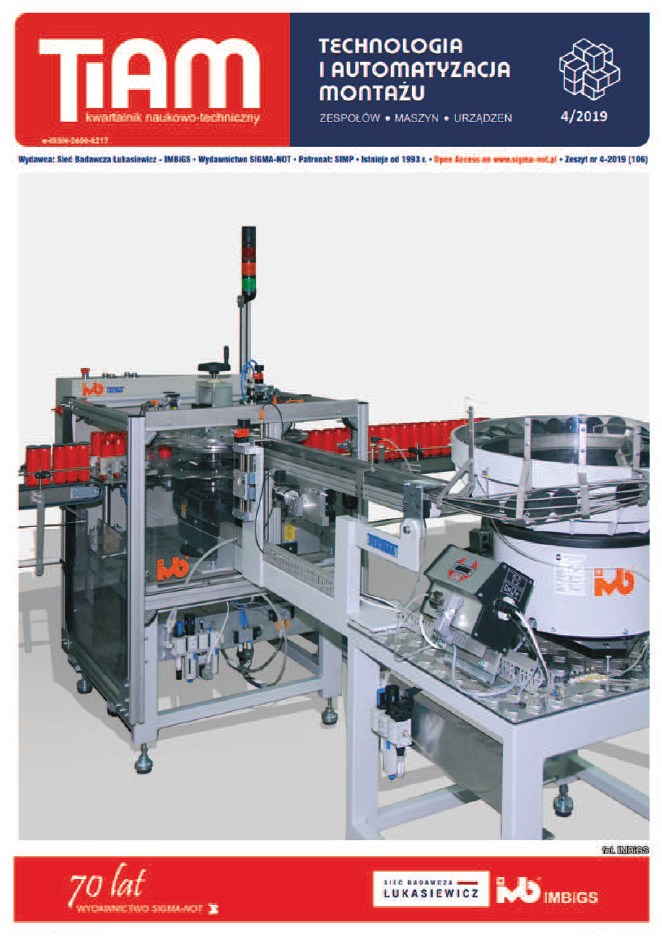Abstract
Adhesive joints are widely used in various industries to join different materials. They always have to meet specific requirements for joint strength or durability. The article presents the results of research on the problem of joining elements made of aluminum alloy and polymer composite material present in the railway industry. The tested adhesive joints combine EN AW- 5754 aluminum alloy (AIMg3) with a polyester-glass laminate. Three types of adhesives were used in the tests: epoxy, methacrylic and cyanoacrylate. Various methods of preparing the base surface and the bonded elements were used. The adhesive bonded surfaces were prepared using sandblasting and degreasing, grinding and degreasing as well as only degreasing. The research used a composite made with the use of two different technologies: contact molding and vacuum molding. Comparative tests were also carried out by making adhesive joints of two aluminum surfaces. The aim of the research was to propose a gluing technology to achieve min 15 MPa of the pull-off strength. The tests show that the required strength of the joint can be achieved only for an adhesive joint based on epoxy or methacrylic adhesive when preparing the surface of the base material by sanding and degreasing, grinding and degreasing, or even only degreasing.
This is an Open Access article distributed under the terms of the Creative Commons Attribution License CC BY 4.0 (https://creativecommons.org/licenses/by/4.0/)
References
Adams R. D., Comyn J., Wake W. C. 1997. "Structural adhesive joints in engineering". 2nd ed. London: Chapman & Hall.
Arenas J. M, Alia C., Narb6n J. J. , Ocalia R., Gonzalez C. 2013. "Considerations for the industrial application of structural adhesive joints in the aluminium- composite material bonding". Compos B 44: 417-23.
Banea M. D. , da Silva L. F. M. 2009. "Adhesively bonded joints in composite materials: an overview". Proc IME J Mater Des Appl 223:1-18.
Banea M. D. 2019. "De bonding on Demand of Adhesively Bonded Joints: A Critical Review". Reviews of Adhesion and Adhesives 7(1): 33-50.
Brockmann w., Hennemann D.-D., Kollek H., Matz C. 1986. "Adhesion in bonded aluminium joints for aircraft construction". International Journal of Adhesion and Adhesives 6(3): 115-143.
Budhe S., Banea M. D., de Barros S., da Silva L. F.
M. 2017. "An updated review of adhesively bonded joints in composite materials". Int J Adhes Adhes, 72: 30-42.
Gay D. 2015. "Composite Materials - Design and Applications". CRC Press Taylor &Francis Group.
Haghani R., AI-Emrani M. 2012. "A new design model for adhesive joints used to bond FRP laminates to steel beams - Part A: Background and theory". Construction and Building Materials 34: 486-493.
Jeevi G., Nayak S. K., Kader M. A. 2019. "Review on adhesive joints and their application in hybrid composite structures". Journal of Adhesion Science and Technology 33(14): 1497-1520.
Mishnaevsky L. 2019. "Repair of wind turbine blades: Review of methods and related computational mechanics problems". Renewable Energy 140: 828- 839.
Parashar A., Mertiny P. 2012. "Adhesively bonded composite tubular joints: Review". International Journal of Adhesion and Adhesives 38: 58--68.


